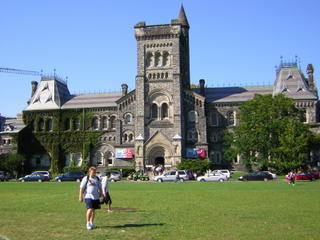League of Nations
In their general assessment of the League of Nations, the authors, LeRoy Bennet and James Oliver, argue that: “If the League of Nations is measured against a yardstick of hopes and possibilities for achieving world peace and cooperation, it fell short of its goal. If, on the other hand, it is measured by the standard of previous advances toward world order, it represented a breakthrough in the development of international organization. If the process of development does not reverse itself, the League will continue to stand as a landmark in the evolutionary process of achieving a more orderly world.” Please explain and discuss the above statement.
Introduction
In the antecedent statement of the authors, they scrutinize the League of Nations in two different perspectives. On the one hand, concerning the inefficiency of the League in maintaining peace and promoting international cooperation, the authors regard the League of Nations as a failure. On the other hand, regarding the constructive invention of the League of Nations as an international organization, and its contribution to the revolutionary impact on the history of international relations, it should be considered as a success. In general, the authors believe that, despite its inefficiency and lack of coercive power, the League serves an influential and constructional function in the route of achieving a more peaceful and arranged world.
In my paper, I will firstly examine the main reasons and cases of the League of Nations’ incompetence and provide a proof of its failure. In this section, the analysis of (1) League’s structural defects, (2) its unanimous voting procedure, and (3) its lack of compulsive sanctions will be provided. These features, in the authors’ point of view, result in the failure of the League. Subsequently, I will discuss the innovative attributes of the League of Nations in terms of (1) its pioneering role as the first multipurpose IGO, (2) the universal membership, and (3) the three unprecedented peace-keeping orientated principles. These features, according to the authors, can be treated as the bases of their treatment of the League as a success. Finally, a conclusion will be made on the overall evaluation of the League of Nations.
The League’s Incompetence and Failure
The League’s incompetence that leads to its failure to provide a more peaceful world order can be analyzed by the following features:
1. Structure Defects: The United States’ Exclusion
The League of Nations’ structure defects consist in, by and large, the United State’s nonparticipation in the League. Sarcastically, despite the fact that it was the President Woodrow Wilson’s advocacy that led to the creation of the League of Nations, the United States never joined the League. In fact, the United States is also the only major power during the Interwar Period which never joined the League. Without the Leadership of the greatest power at that time, the League lacked a concerted action agreed by the major powers, not to mention the possibility of maintenance of world peace. Taking the Manchuria Case for example, the ineffectiveness of the peaceful intervention can be blamed for the United States’ “aloofness” in the league[1]. The absence of the United States in the League of Nations therefore is the first reason that leads to the League’s failure.
2. Unanimous Voting Procedure
The Committee decisions could be taken by majority vote, but final approval on most issues had to face the requirement of unanimity in a plenary session of the Assembly.[2] As we could imagine, whenever there was a dispute among the nations, a unanimous agreement must be made. In this type of voting procedure, every single nation has the veto power. In order to pass a consensus resolution, the time consumed or the negotiation efforts made are costly in general. This feature thus generates one of the critical defects of the League of Nations system. Although the convention of unanimous vote was sometimes bypassed by a number of special provisions, practices, and devices, this voting procedure indeed constitutes a factor for the League’s ineffectiveness and ultimate failure.
3. Lack of Compulsive Sanctions
The League of Nations did not provide significant means of sanction against those who did not abide by the international order at that time. For instance, albeit the League Court is empowered to determine whether or not any member has fulfilled its obligations to another member, it is also true that the court does not have compulsory jurisdiction over all the members of the League[3]. On top of that, the ineffectiveness of the League in the face of aggression by a major power was a blow to the prestige of the organization and served as an indication to other states bent on conquest that the will to apply sanctions was lacking on the part of the most powerful League members[4].
The League’s Contribution and Success
In spite of the League of Nations’ failure of providing an effective regime for peace maintenance, it undoubtedly serves as an evolutionary experiment on the new international power arrangement. I will inspect its contribution and innovative ideas in this section.
1. Pioneering Role as the First Multipurpose IGO
Before the invention of League of Nations, in terms of the issue areas dealt with, there was not any single intergovernmental organization that was as comprehensive as the League was. Apart from the major task of promoting peace and preventing war, international economic and social cooperation was also included in the institution. Furthermore, the objectives of abolition of secret treaties, the management of the mandate system, as well as the discussion on humanitarian issues, are unprecedentedly comprised in the League of Nations. Consequently, as the first multipurpose intergovernmental organization in the history, the League’s contribution to the development of new international order is formidable.
2. The Universal Membership
The membership of the League of Nations is notable for its inclusion of all the major nations (excluding the United Sates.) This universal membership provides a basis for a worldwide cooperation, instead of a single regional arrangement which had been customary in Europe. Despite the fact that the League of Nations does not serve as a world government, its pioneering role of providing an international forum for all countries to participate in and discuss the potential political, economic, or social cooperation, surely can be regarded as a contribution to the development of international organization as well as the process of achieving a more orderly world.
3. Three Peace-Keeping Orientated Principles
The peace-keeping orientated principles of the League of Nations, i.e. collective security, peaceful settlement of disputes, and fostering international cooperation, play vital roles and represent a break through in the evolutionary process of international organization.
As regard to the collective security, ten of the twenty-six articles of the Covenant dealt with the means for achieving this goal. Although war was not totally outlawed by the Covenant, the intention was clear that through peaceful settlement of disputes wars should be prevented and that any aggressor who resorted to war in violation of the Covenant should be dealt with promptly and effectively by the collective action of all other members[5]. Under the system of collective security, members agreed to respect and preserve the territorial integrity and political independence of other states, and any war or threat of war was a matter of concern to the whole League. As a result, despite not fully implemented by the countries at that time, not even under the UN system, the principle of collective security at least becomes a notion that lead us to a more orderly international system.
The Permanent Court of International Justice serves as the major organ in the League of Nation that provides the peaceful settlement of disputes. For the first time in the history the dispute among nations could be arbitrated by an international court rather than by the violent means, such as the military actions. Thus, the moral aspect of the international relations was advanced by the invention of Permanent court of International Justice, as well as the League of Nations itself, which exemplifies one of the successful experiments by the League.
Finally, with respect to fostering international economic and social cooperation, issues such as (1) just treatment of non-self-governing peoples, (2) supervision of traffic in women and children, (3) supervision of traffic in dangerous drugs, (4) supervision of the arms trade, (5) freedom of communications and transit, (6) equitable treatment of international trade for all states, and (6) the prevention and control of disease, are covered in the League of Nations’ Covenant[6]. These comprehensive issues were never dealt by such an international-based cooperation, and thus contribute to the constructive goal of the League of Nations in its process of achieving more orderly world.
Conclusion
As evaluating whether modern international organizations, such as the League of Nations and the United Nations, are successful or not, we judge on the basis of their handling of disputes and their utility in avoiding war. In other words, the organization’s success or failure is ultimately assessed primarily in terms of its utility in the control of political and military conflict[7]. The authors in their statement agree with this point, in terms of the League’s structure defects, the inefficient unanimous voting procedure, as well as the lack of compulsive sanctions. However, when we scrutinize the League of Nation’s innovative attributes, for instance, its pioneering role as the first multipurpose intergovernmental organization, the universal membership in the League, as well as the realization of the idea of collective security, peaceful settlement of conflicts, and international cooperation, we cannot deny its contribution to the development of modern international relations. In conclusion, the authors notice that, despite a number of defects and inefficiency in the League of Nations, we should not overlook the significant influence of the League of Nations, for its remarkable contribution to the process of making a more just world come true.
Reference
C.G Fenwick. “The ‘Failure’ of the League of Nations,” The American Journal of International Law, Vol. 30, No. 3 (Jul., 1936), 506-509.
Edward A. Harriman. “The League of Nations a Rudimentary Superstate,” The American Political Science Review, Vol. 21, No.1 (Feb., 1927), 137-140
Gerhart Niemeyer. “The Balance-Sheet of the League Experiment,” International Organization, Vol. 6, No. 4 (Nov., 1952), 537-558
LeRoy Bennett, James K. Oliver. International Organizations: Principles and Issues. 7th ed, Pearson Education, Inc., 2002
[1] Gerhart Niemeyer. “The Balance-Sheet of the League Experiment,” International Organization, Vol. 6, No. 4 (Nov., 1952), pg. 557
[2] LeRoy Bennett, James K. Oliver. International Organizations: Principles and Issues. 7th ed, Pearson Education, Inc., 2002. pg. 34
[3] Edward A. Harriman. “The League of Nations a Rudimentary Superstate,” The American Political Science Review, Vol. 21, No.1 (Feb., 1927), pg. 138
[4] LeRoy Bennett, James K. Oliver. International Organizations: Principles and Issues. 7th ed, Pearson Education, Inc., 2002, pg. 39
[5] LeRoy Bennett, James K. Oliver. International Organizations: Principles and Issues. 7th ed, Pearson Education, Inc., 2002, pg. 31
[6] LeRoy Bennett, James K. Oliver. International Organizations: Principles and Issues. 7th ed, Pearson Education, Inc., 2002, pg. 32-33
[7] LeRoy Bennett, James K. Oliver. International Organizations: Principles and Issues. 7th ed, Pearson Education, Inc., 2002, pg. 38
















